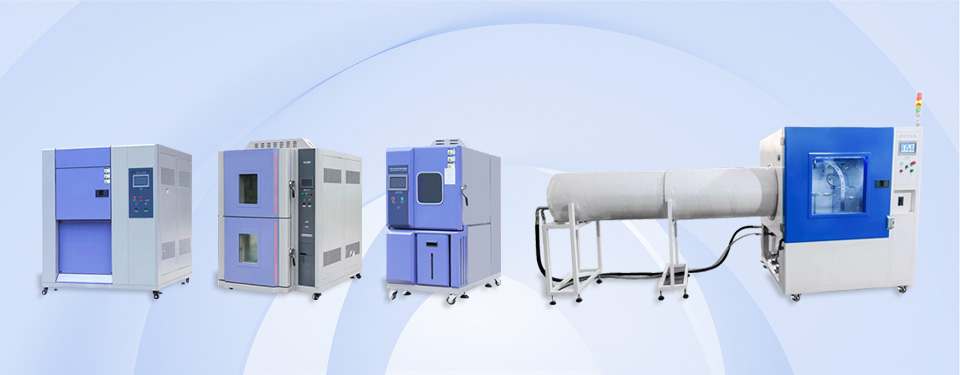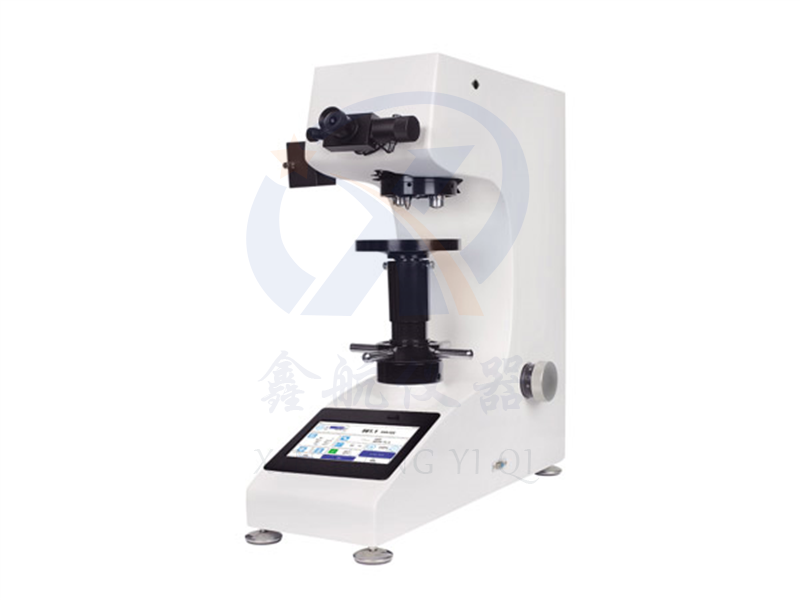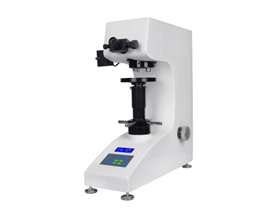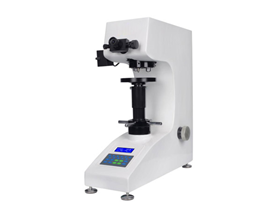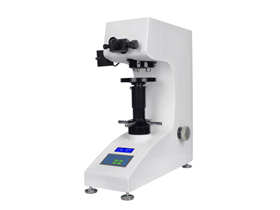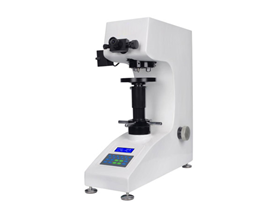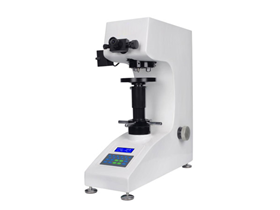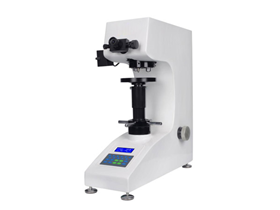Overview:
Integrated cast aluminum body, without deformation or displacement, with a weight loading structure, stable performance, high measurement accuracy, and good repeatability. Hardness conversion function. The objective lens and pressure head can automatically switch for precise positioning. 7-inch high sensitivity touch screen operation display. After selecting the communication protocol, it can communicate with the computer and achieve automatic control. Menu style structure, automated experimental process, and easy operation. High definition optical system and objective lens, the brightness of the light source can be adjusted by 10 levels. Test results and data processing, one click export of USB data to Excel format report. Diagonal length D1 and D2 encoder inputs are convenient and fast, reducing human reading errors. The display interface adopts a menu style structure, and the human-machine dialogue is very friendly, easy to operate, and easy to install and debug.
Basic functions:
● 7-inch color screen display, high sensitivity touch screen operation;
● Menu style structure, automated testing process, and easy operation;
● High definition optical system and objective lens, with adjustable brightness of the light source up to 10 levels;
● Hardness conversion function;
Diagonal length D1 and D2 encoder inputs, convenient and fast, reducing human reading errors
The objective lens and pressure head can be automatically switched for precise positioning;
● Can communicate with computers and achieve automatic computer control;
● Test results and data processing, USB data one click export, Excel format
Application scope:
In terms of material research and scientific experiments, the low load Vickers hardness test is used to test the hardness of small precision parts, heat treatment, carbonization, quenching and hardening layers, surface coatings, hardness of steel, non-ferrous metals, thin sheet materials and fine wire materials, hardness near the cutting edge, hardness of dental materials, etc. It can also test the hardness and depth of the surface hardening layer. It can also be used to test non-metallic materials such as glass, jewelry, and ceramics that cannot be tested using the Rockwell test method and other relatively high test forces. It can follow the structure of metals and test the internal hardness of materials such as induction hardening or carburization.
Vickers test principle:
The Vickers hardness test is conducted by using a 136 ° diamond indenter to press a specified test force (F) into the surface of the tested object. After maintaining the test force for a specified period of time, the test force is removed, and the diagonal (d) of the indentation on the surface of the specimen is measured using a micrometer eyepiece. The average pressure (N/mm2) borne by the conical surface area of the indentation is calculated, which is the Vickers hardness value. (See Figure 1.1 for details).
Appearance of the hardness tester host.
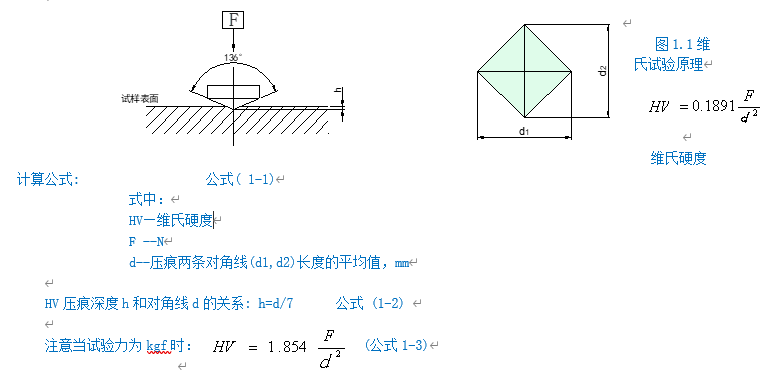
Technical data:
|
model
|
MHVS10Z(Automatic turret)
|
|
Experimental force
|
0.3Kgf0.5Kgf1Kgf3Kgf5Kgf10Kgf
|
|
Exchange Scales
|
GB,ISO,ASTM
|
|
measuring range
|
8-2900HV
|
|
Minimum measurement unit
|
0.0625μM (20Multiplier objective);0.125μM (10Multiplier objective)
|
|
Test force holding time
|
5~60sAdjustable (per1Seconds as a unit)
|
|
measurement accuracy
|
Meet or exceedGB/T4340.2
|
|
Total magnification
|
Observation and measurement100XMeasurement200X
|
|
data output
|
USB
|
|
loading control
|
Automatic (loading, holding, unloading)
|
|
Instrument weight
|
about45kg
|
|
Maximum size of the specimen
|
Maximum height165mm From the center of the pressure head to the inner wall130mm
|
|
source
|
AC220V±5%,50~60Hz
|
|
Execution standards
|
GB/T4340.2national standards JJG151Verification regulations
|
|
Optional Accessories
|
XYWorkbench, electricXYWorkbenchCCDMeasurement system, Knoop indenter, fine wire clamping tableRS232Real time communication between upper and lower computers
|
Appendix 1
|
hardness
symbol
|
maximum error
Represented as a percentage of the specified hardness value for a standard block
|
|
Hardness,HV
|
|
50
|
100
|
150
|
200
|
250
|
300
|
350
|
400
|
450
|
500
|
600
|
700
|
800
|
900
|
1000
|
1500
|
|
HV0.1
|
5
|
6
|
7
|
8
|
8
|
9
|
10
|
10
|
11
|
|
|
|
|
|
|
|
|
HV0.2
|
|
4
|
|
6
|
|
8
|
|
9
|
|
10
|
11
|
11
|
12
|
12
|
|
|
|
HV0.3
|
|
4
|
|
5
|
|
6
|
|
7
|
|
8
|
9
|
10
|
10
|
11
|
11
|
|
|
HV0.5
|
|
3
|
|
5
|
|
5
|
|
6
|
|
6
|
7
|
7
|
8
|
8
|
9
|
11
|
|
HV1
|
|
3
|
|
4
|
|
4
|
|
4
|
|
5
|
5
|
5
|
6
|
6
|
6
|
8
|
|
HV2
|
|
3
|
|
3
|
|
3
|
|
4
|
|
4
|
4
|
4
|
4
|
5
|
5
|
6
|
|
HV3
|
|
3
|
|
3
|
|
3
|
|
3
|
|
3
|
4
|
4
|
4
|
4
|
4
|
5
|
|
HV5
|
|
3
|
|
3
|
|
3
|
|
3
|
|
3
|
3
|
3
|
3
|
3
|
4
|
4
|
|
HV10
|
|
3
|
|
3
|
|
3
|
|
3
|
|
3
|
3
|
3
|
3
|
3
|
3
|
3
|
|
HV20
|
|
3
|
|
3
|
|
3
|
|
3
|
|
3
|
3
|
3
|
3
|
3
|
3
|
3
|
|
HV30
|
|
3
|
|
3
|
|
2
|
|
2
|
|
2
|
2
|
2
|
2
|
2
|
2
|
2
|
|
HV50
|
|
3
|
|
3
|
|
2
|
|
2
|
|
2
|
2
|
2
|
2
|
2
|
2
|
2
|
|
HV100
|
|
|
|
3
|
|
2
|
|
2
|
|
2
|
2
|
2
|
2
|
2
|
2
|
2
|
|
Note:
1.When the diagonal of the indentation is less than0.020mmWhen, the table does not provide error values.
2.For the median, its maximum allowable error can be obtained by interpolation.
3.The median in the table is represented by0.001mmOr the average diagonal value of the indentation2%The maximum error is given, whichever is greater.
|
|
The content in the table is excerpted fromGB/T4340.2.
|
Appearance of hardness tester host:
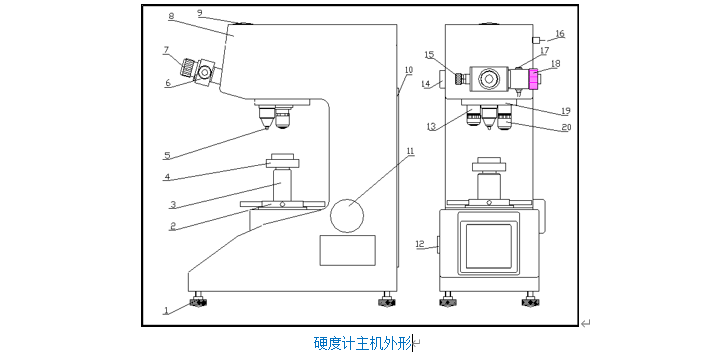
|
1.Adjusting screws
|
2.Spinning wheel
|
3.screw
|
4.Test bench
|
5.Pressure head
|
|
6.eyepiece
|
7.Eye mask
|
8.Upper cover
|
9.Camera cover
|
10.Rear cover plate
|
|
11.handwheel
|
12.Power switch
|
13.10х objective lens
|
14.Lamp source
|
15.Left drum wheel
|
|
16.Circular socket
|
17.Measurement button
|
18.Right drum wheel
|
19.Turret
|
20. 20х objective lens
|
Introduction to panel key functions:
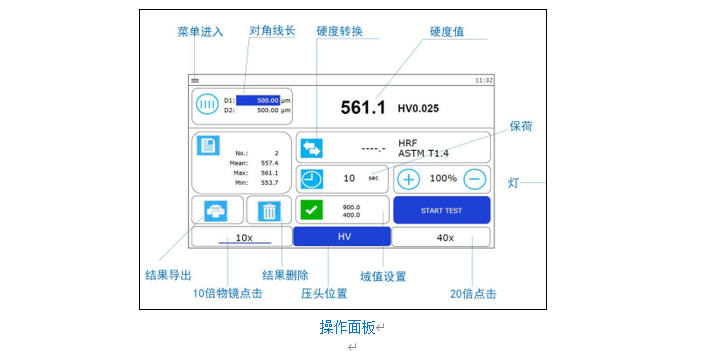
Use of hardness tester:
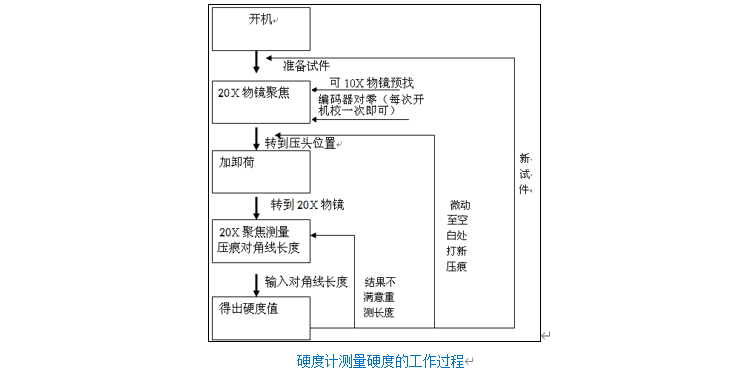
Specific measurement method for indentation:
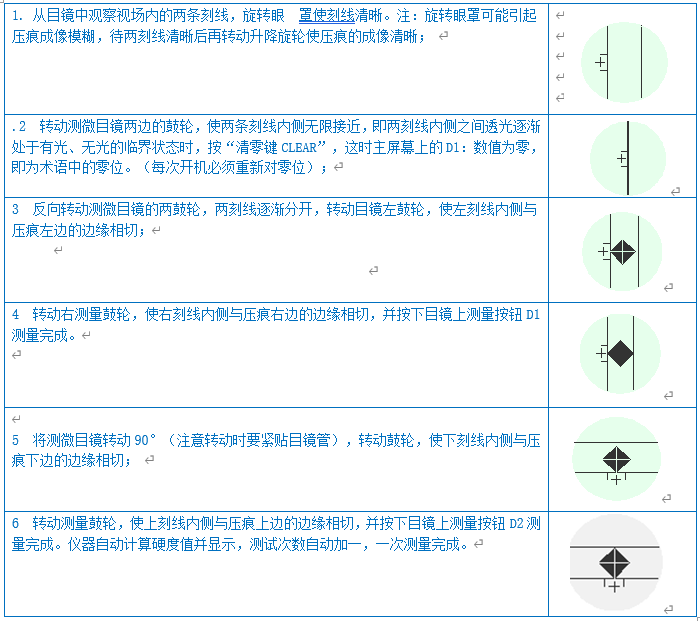
The hardness tester meets the standard:
GB/T4340.1-1999 GB/T 4340.1-1999 Metallic Vickers Hardness Test Part 1: Test Methods
GB/T4340.2-1999 GB/T 4340.2-1999 Metallic Vickers Hardness Test Part 2: Verification of Hardness Machines
International standard ISO 6507-2:2018 "Vickers hardness test for metallic materials - Part 2: Verification and calibration of hardness testers"
ASTM E384-17 Standard Test Method for Knoop and Vickers Hardness of Materials
JJG151- Verification regulation of metal Vickers hardness tester
Standard configuration
|
name
|
quantity
|
name
|
quantity
|
|
Instrument host
|
1platform
|
objective lens20x10x,
|
various1only
|
|
Vickers indenter
|
1only
|
Weights(10KG)
|
3only
|
|
Vickers hardness block
|
2block
|
Large, medium“V”Test bench
|
various1only
|
|
Power cord
|
1root
|
10Micrometer eyepiece
|
1only
|
|
Product User Manual
|
1share
|
Product Qualification Certificate
|
1share
|



